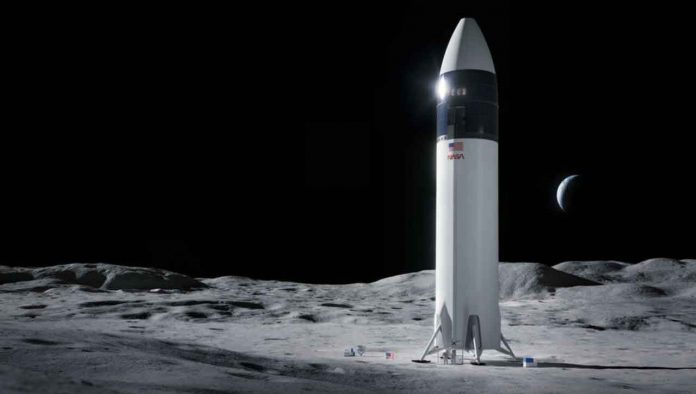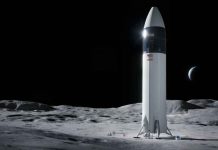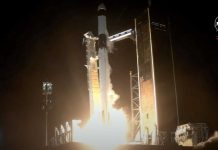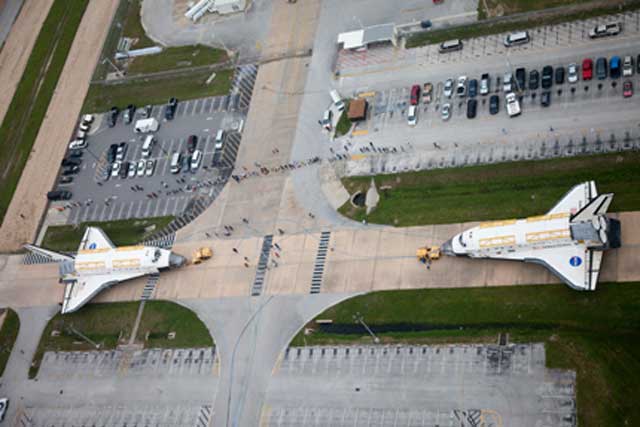NASA has finalized its contract with Boeing of Huntsville, Alabama, for approximately $3.2 billion to continue manufacturing core and upper stages for future Space Launch System (SLS) rockets for Artemis missions to the Moon and beyond.
Under the SLS Stages Production and Evolution Contract action, Boeing will produce SLS core stages for Artemis III and IV, procure critical and long-lead material for the core stages for Artemis V and VI, provide the exploration upper stages (EUS) for Artemis V and VI, as well as tooling and related support and engineering services.
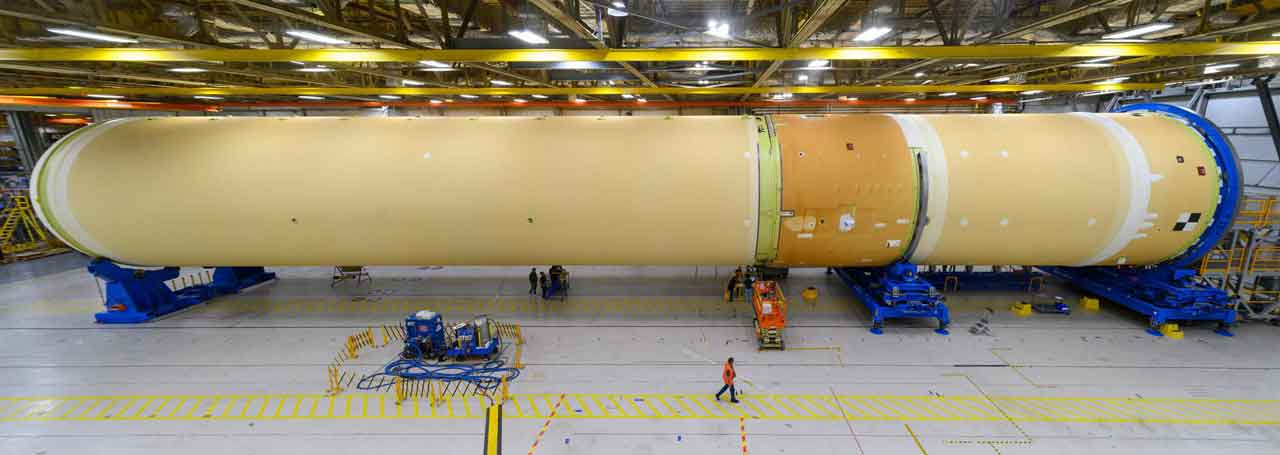
Credits: NASA/Eric Bordelon
In October 2019, NASA provided initial funding and authorization for Artemis III core stage work and targeted long-lead materials and cost-efficient bulk purchases. The finalization of this contract extends production activities and preparations for future work through July 2028. As part of the contract NASA may order up to 10 core stages and eight exploration upper stages total to support future deep space exploration missions.
“NASA’s Space Launch System rocket is the only rocket capable of sending large cargos and soon, astronauts to the Moon,” said John Honeycutt, SLS Program manager. “The SLS core stage is the backbone of NASA’s Moon rocket, producing more than 2 million pounds of thrust at launch, and the addition of the exploration upper stage will enable NASA to support missions to deep space through the 2030s.”
The SLS rocket delivers propulsion in stages and is designed to evolve to more advanced configurations to power NASA’s deep space missions. Each SLS rocket configuration uses the same 212-foot-tall core stage to produce more than 2 million pounds of thrust to help propel the mega rocket off the launch pad.
For the first three Artemis missions, SLS uses an interim cryogenic propulsion stage with one RL10 engine to send NASA’s Orion spacecraft to the Moon. Beginning with Artemis IV, the SLS Block 1B rocket configuration will be propelled by the more powerful EUS with larger fuel tanks and four RL10 engines to send a crewed Orion and large cargos to the Moon. All the structures for the rocket’s core stage and EUS are manufactured at NASA’s Michoud Assembly Facility in New Orleans.
The contract comes as NASA optimizes manufacturing capabilities as Boeing will use Kennedy Space Center in Florida to perform some core stage assembly and outfitting activities beginning with the Artemis III rocket. In tandem, teams will continue all core stage manufacturing activities at Michoud.
Teams continue to make progress assembling and manufacturing core stages for Artemis II, III, and IV. The Artemis II stage is scheduled to be completed and delivered to Kennedy in 2023. The engine section for Artemis III was recently loaded onto NASA’s Pegasus barge for delivery to Kennedy, where it will be outfitted and later integrated with the rest of the rocket.
With Artemis, NASA will land the first woman and the first person of color on the lunar surface and establish long-term exploration at the Moon in preparation for human missions to Mars. SLS and NASA’s Orion spacecraft, along with the commercial human landing system and the Gateway in orbit around the Moon, are NASA’s backbone for deep space exploration.
For more information about the Space Launch System, visit:

